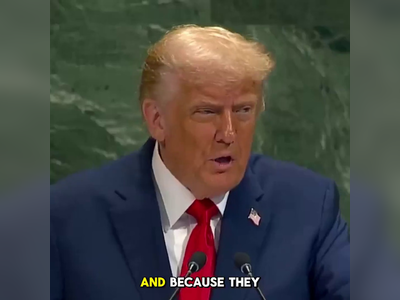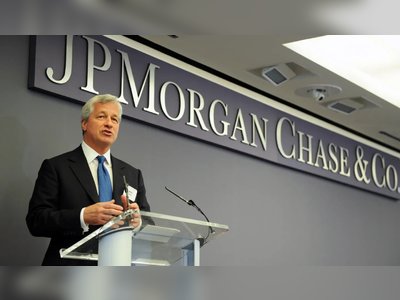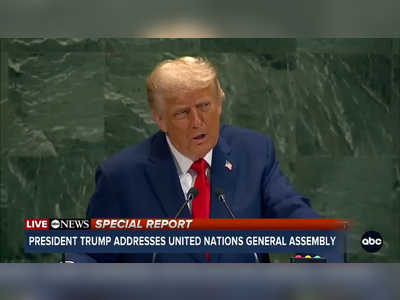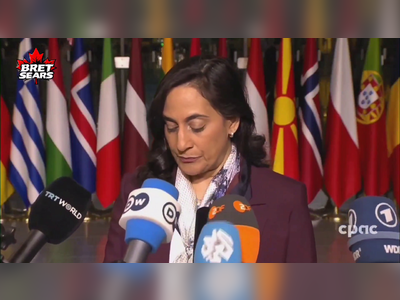
U.S. to Implement Tariffs of Up to 104% on Chinese Goods Starting Wednesday
In response to China's retaliatory tariffs, the U.S. government announces significant increases in tariffs affecting numerous imports from China.
The White House has confirmed that the United States will raise tariffs on Chinese imports to as high as 104% beginning Wednesday at midnight, following retaliatory measures from Beijing.
President Donald Trump announced this escalation in response to China's imposition of reciprocal tariffs earlier this week, which were set at 34%.
According to White House spokesperson Karoline Leavitt, these increased tariffs will take effect one minute after midnight.
Trump's announcement came after he stated that if China did not withdraw its tariffs by noon on Tuesday, the U.S. would implement an additional 50% tariff on a range of Chinese exports.
Before the deadline passed, Trump asserted that China 'desperately' wants to reach an agreement regarding tariffs but indicated that they were unclear on how to proceed with negotiations.
The U.S. administration expressed its readiness to receive a call from Chinese President Xi Jinping to discuss the matter further.
In response, Chinese authorities condemned the U.S. actions, labeling them as 'blackmail.' On the previous Friday, China had initiated countermeasures to the tariffs announced by Trump, which had raised tariffs on Chinese products to at least 54%.
The Chinese measures included implementing a 34% tariff on imports from the United States, sanctions targeting certain U.S. companies, and restrictions on the export of specific rare earth materials.
Additionally, China suspended imports of chicken and sorghum from select U.S. firms and launched anti-monopoly and anti-dumping investigations against American companies and goods.
Furthermore, China has filed a complaint with the World Trade Organization (WTO) regarding the 'reciprocal tariffs' imposed by the U.S. on all its trading partners under the dispute resolution mechanism.
On April 2, Trump had announced a set of global tariffs starting at 10%, which took effect on Saturday, with higher rates planned for specific regions and countries, including China and the European Union, set to begin on April 9.
President Donald Trump announced this escalation in response to China's imposition of reciprocal tariffs earlier this week, which were set at 34%.
According to White House spokesperson Karoline Leavitt, these increased tariffs will take effect one minute after midnight.
Trump's announcement came after he stated that if China did not withdraw its tariffs by noon on Tuesday, the U.S. would implement an additional 50% tariff on a range of Chinese exports.
Before the deadline passed, Trump asserted that China 'desperately' wants to reach an agreement regarding tariffs but indicated that they were unclear on how to proceed with negotiations.
The U.S. administration expressed its readiness to receive a call from Chinese President Xi Jinping to discuss the matter further.
In response, Chinese authorities condemned the U.S. actions, labeling them as 'blackmail.' On the previous Friday, China had initiated countermeasures to the tariffs announced by Trump, which had raised tariffs on Chinese products to at least 54%.
The Chinese measures included implementing a 34% tariff on imports from the United States, sanctions targeting certain U.S. companies, and restrictions on the export of specific rare earth materials.
Additionally, China suspended imports of chicken and sorghum from select U.S. firms and launched anti-monopoly and anti-dumping investigations against American companies and goods.
Furthermore, China has filed a complaint with the World Trade Organization (WTO) regarding the 'reciprocal tariffs' imposed by the U.S. on all its trading partners under the dispute resolution mechanism.
On April 2, Trump had announced a set of global tariffs starting at 10%, which took effect on Saturday, with higher rates planned for specific regions and countries, including China and the European Union, set to begin on April 9.
Translation:
Translated by AI
AI Disclaimer: An advanced artificial intelligence (AI) system generated the content of this page on its own. This innovative technology conducts extensive research from a variety of reliable sources, performs rigorous fact-checking and verification, cleans up and balances biased or manipulated content, and presents a minimal factual summary that is just enough yet essential for you to function as an informed and educated citizen. Please keep in mind, however, that this system is an evolving technology, and as a result, the article may contain accidental inaccuracies or errors. We urge you to help us improve our site by reporting any inaccuracies you find using the "Contact Us" link at the bottom of this page. Your helpful feedback helps us improve our system and deliver more precise content. When you find an article of interest here, please look for the full and extensive coverage of this topic in traditional news sources, as they are written by professional journalists that we try to support, not replace. We appreciate your understanding and assistance.











